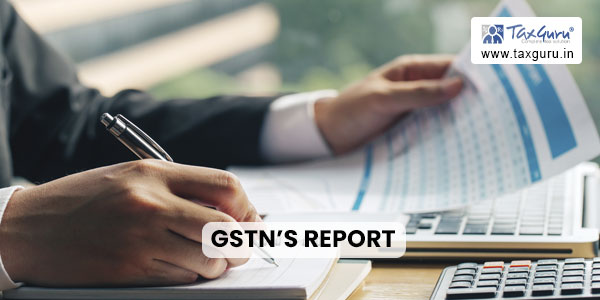Economic Advisory Council to Prime Minister (EAC- PM) has released a Paper on working of GSTN over last five years.
India’s indirect tax system was transformed in July 2017, when the central government, in partnership with the state governments, introduced the Goods and Services Tax (GST). It replaced a complex system of 17 indirect taxes previously levied by the central and state governments in order to create a unified taxation system that applied to the whole country. Effectively, this was a free trade agreement that India signed with itself, thereby creating a single national market. The GST is governed by the GST Council, which has representatives from the central and state governments.

India’s indirect tax system was transformed in July 2017, when the Central Government, in partnership with the state governments, introduced the Goods and Services Tax (GST). It replaced a complex system of 17 indirect taxes previously levied by the central and state governments in order to create a unified taxation system that applied to the whole country. Effectively, this was a free trade agreement that India signed with itself, thereby creating a single national market. The GST is governed by the GST Council1, which has representatives from the central and state governments. GST regime has brought about greater efficiency, transparency, and cost savings across the supply chain for businesses. One of the primary objectives of GST was to boost the tax revenues.
During the GST regime, we all know that India’s main indirect tax collection, viz Goods and Service Tax has witnessed a significant boost after the introduction of GST and have been rising steadily. The unified digitized system for taxpayers as well as for tax administrators has enabled a single point of aggregation with more efficiency and transparency.
However, there have been a lot of complaints and requests for clarification at the time of transition, and during the disruptions caused by the Covid-19 pandemic. Even in ‘normal’ times, there is always a flow of queries, complaints and system bugs.
The report basically examines the GST system from the perspective of process efficiency and the ability of the system to correct by responding to feedback loops. It delves into areas such as customer complaint rates, responsiveness of the Goods and Services Tax Network (GSTN), time taken for redressal, and the technological tools being used to improve interactions with taxpayers.
The Paper titled ‘Fixing the GST Process: Five Years of Iterative Problem Solving (April, 2023) highlights the following :
- While the GST regime began with Rs. 38 lakh taxpayers on 01st July 2017, it saw a steady increase and had climbed to 1.12 crore taxpayers by June 2018. Now, there are 1.37 crore taxpayers, with a peak count of nearly 1.42 crore in the last quarter of 2022.
- The complaint rate has declined from 2.36 lakh complaints (in early 2018) to Rs. 17,000 in the last quarter of 2022. The ratio of complaints to the usage of the system (i.e. number of returns filed), which was as high as 83 problems reported for every 10,000 returns, have now reduced drastically to less than 4 reported problems, demonstrating the sharp reduction in the complaint ratio.
- GSTN has introduced a chatbot, called GITA, for taxpayers, to add another channel of interaction as well as to introduce automated responses to frequent and simpler queries of users.
- There has been a level shift in collections. Revenues of the last full year of the old indirect tax system (prior to GST) was Rs 3.91 lakh crores in 2016-17 (combining collections from all 17 legacy taxes). The GST system now collects more revenue in a quarter; and the annual collections for 2022-23 is a record 18.06 lakh crore.
- There is a significant decline in reported bugs and defects since 2017. Interestingly, the largest number of bugs were in the returns and registrations section, and these have sharply reduced. Nonetheless, given that the system has now been in use for several years, the overall system still threw up almost five hundred bugs in 2022.
- The timings for technical fixing show a consistent trend of 3 to 5 days for resolution.
- For providing technology-based assistance, a robotic automated ‘chatbot’ has been provided on the GST helpdesk portal (Grievance Redressal Portal or GRP). It provides taxpayers with automated answers to common queries, status updates and even answers to FAQs.
- The time taken to resolve taxpayer issues at the call centre is usually 22-24 hours as these issues are usually simpler and more routine than the above technical issues). This is perhaps an acceptable range but we found that it was prone to spikes.
The Paper found that the performance of the GSTN system has improved steadily over time. It is felt that feedback loops have responded well with the readiness of the government and tax administration to pay attention to the inputs and suggestions of trade, industry and business, with a satisfaction score that is steady at 92-93% and a complaint ratio at 0.04%. Despite the disruptions caused by COVID-19 pandemic, the on-time filing rate of returns has stabilized at Rs. 76 %, which may be good so far. Nonetheless, an effort is needed to achieve the 86% or higher, as seen in developed economies.
The report deals with the responsiveness of the GST system to feedback relating to technical errors, bugs and other problems. Research on process efficiency and reforms, as opposed to structural reforms, is scarce in India and this report aims to provide an example of this line of enquiry.
The report in conclusion opines that the performance of the GSTN system has improved steadily over time. The feedback loops have responded well with the readiness of the government and tax administration to pay attention to the inputs and suggestions of trade, industry and business, with a high satisfaction score.
************





